Cultured Butter
Learning how to make cultured butter provides you with a simple skill that results in two delicious products. The butter for one, but you also get cultured buttermilk as a by-product of the butter making process.
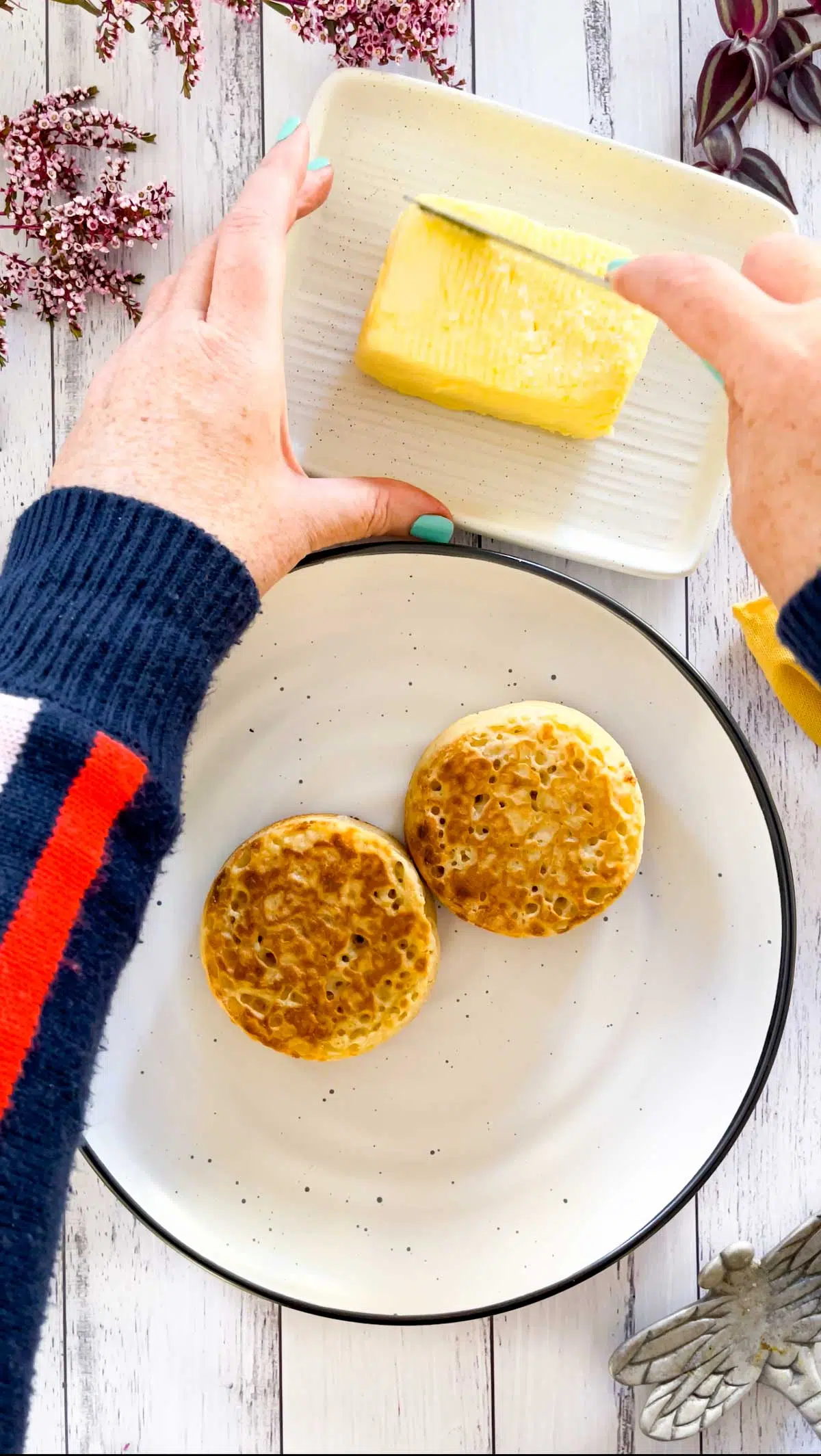
In This Article
What Is Cultured Butter?
Cultured butter is made from cream that has been fermented. In this process, the cream is soured by bacteria converting the milk sugars into lactic acid… which creates an abundance of beneficial probiotic bacteria for us too.
The ideal cream to use here is raw, but as that is not widely available in many countries, pasteurised cream is also fine. It does require the addition of some yoghurt though, to help kickstart the fermentation process. This is to provide the necessary bacteria for the cream to ferment, as the naturally occurring bacteria are removed during pasteurisation.
What Do I Do With The Buttermilk?
Honestly your options are endless. I love adding it to pancakes, using it to make ice cream or simply adding it to smoothies. You could also add it to baking in place of milk or add some to scrambled eggs. One last suggestion is using it to make a creamy salad dressing. If none of those take your fancy you can always just drink it as is.
Cultured Butter Ingredients
All you will need here is some cream with a minimum 35% fat and a little yoghurt to help the initial fermentation along. Once the butter is ready you may like to add some salt to the top or mix it through but it’s not essential.
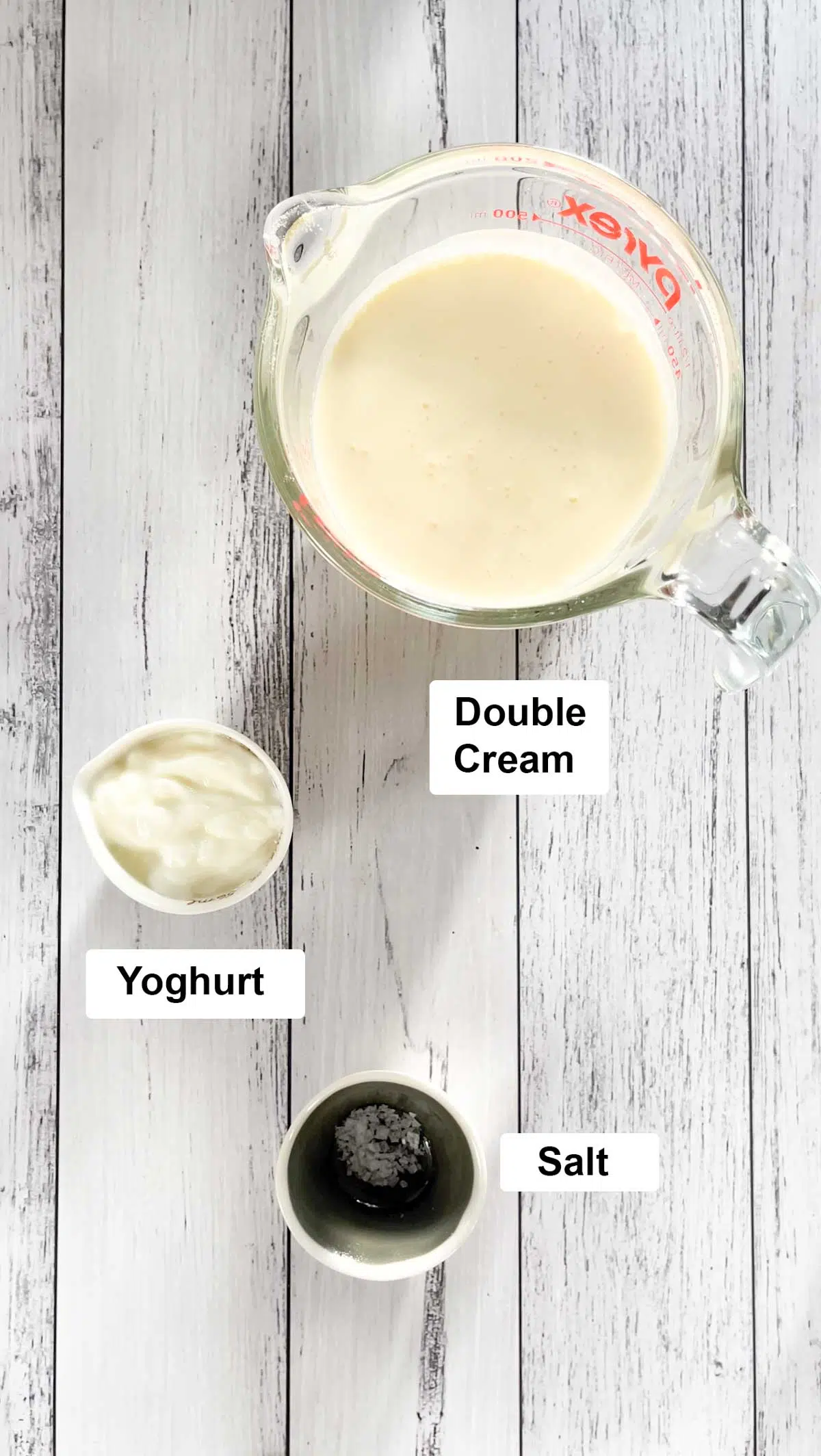
- Double cream – This is known by many names in various countries. Just make sure you have a cream that contains a minimum 35% fat.
- Yoghurt – Only a very small amount but it’s necessary to provide the lactic acid bacteria that will thicken up and slightly sour the cream.
How To Make Cultured Butter
There are actually three ways to do this. I’ve given the simplest here, which is to use a stand mixer. The other two include a butter churner, or vigorously shaking a jar until the cream breaks into solids and a liquid.
Day 1
- Add yoghurt and cream to a bowl and whisk until well-combined.
- Cover the bowl with a clean cloth and set aside to ferment. 24 hours is generally sufficient, but it may be more if it’s cold where you are or less if it’s warmer.
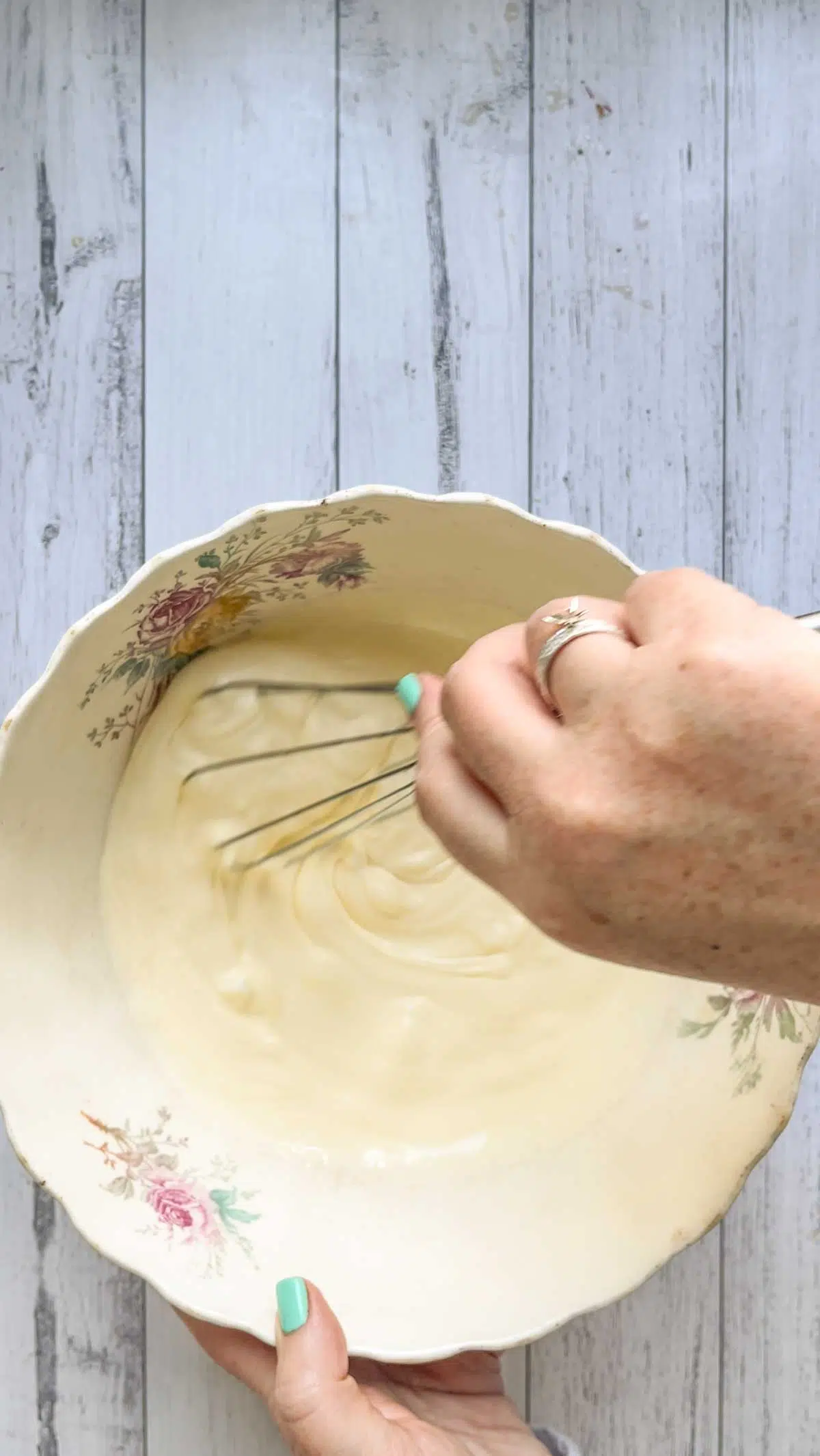
Day 2
- Prepare a bowl with ice cold water and set it aside.
- Remove the cover from the fermented cream and tip it all into the bowl of your mixer. Mix on high for a couple of minutes or until you see the cream split into a solid (butter) and liquid (buttermilk).
- Line another bowl with muslin or a thin, clean tea towel. Pour the butter and buttermilk into it then gather the sides, pick it up and squeeze to drain all the buttermilk out.
- Pour the buttermilk into a jar and keep in the fridge until using.
- Form the butter into a ball in your hands. Now dunk it into the iced water several times squeezing it as you do and washing off any remaining buttermilk. This ensures the butter won’t spoil.
- If you have butter pats – Put the washed and cultured butter onto a chopping board and pat into a rectangle. Place in a butter dish, sprinkle with salt (optional) and store in the fridge.
- If you don’t have butter pats – You can press the freshly made butter into a small dish and cover it before placing in the fridge. Or you can put it onto some baking paper, roll it into a log and store it that way.
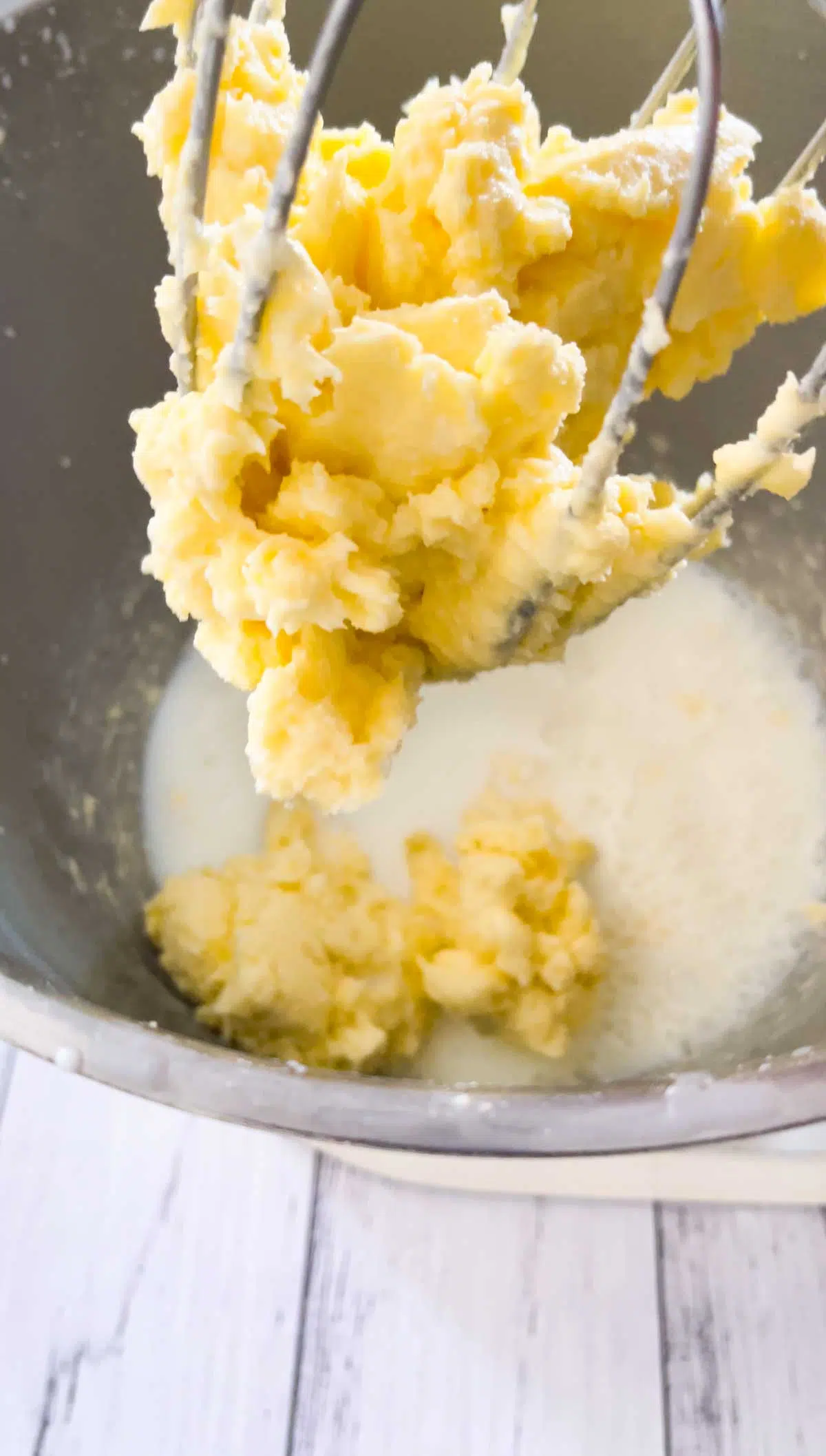
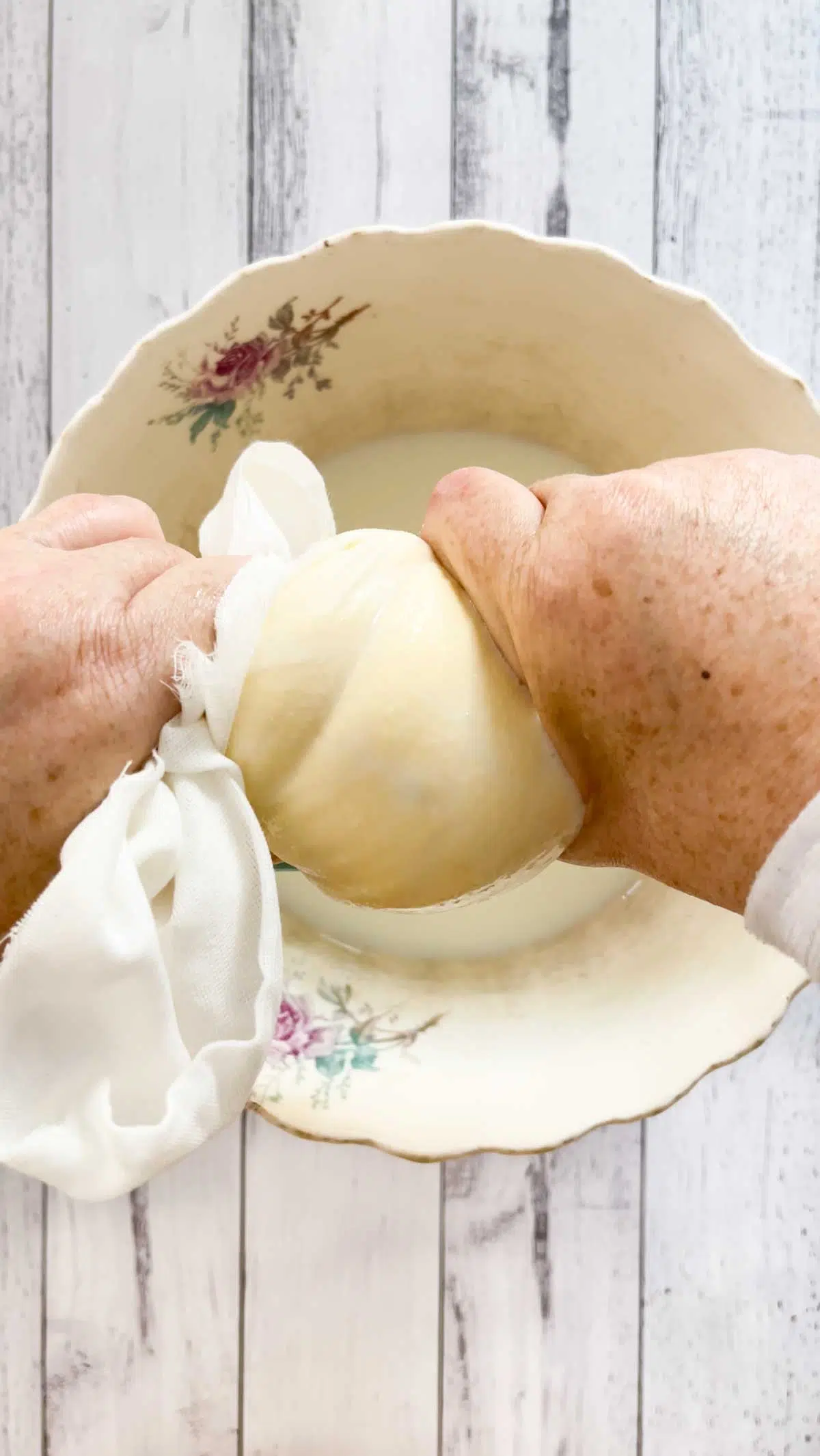
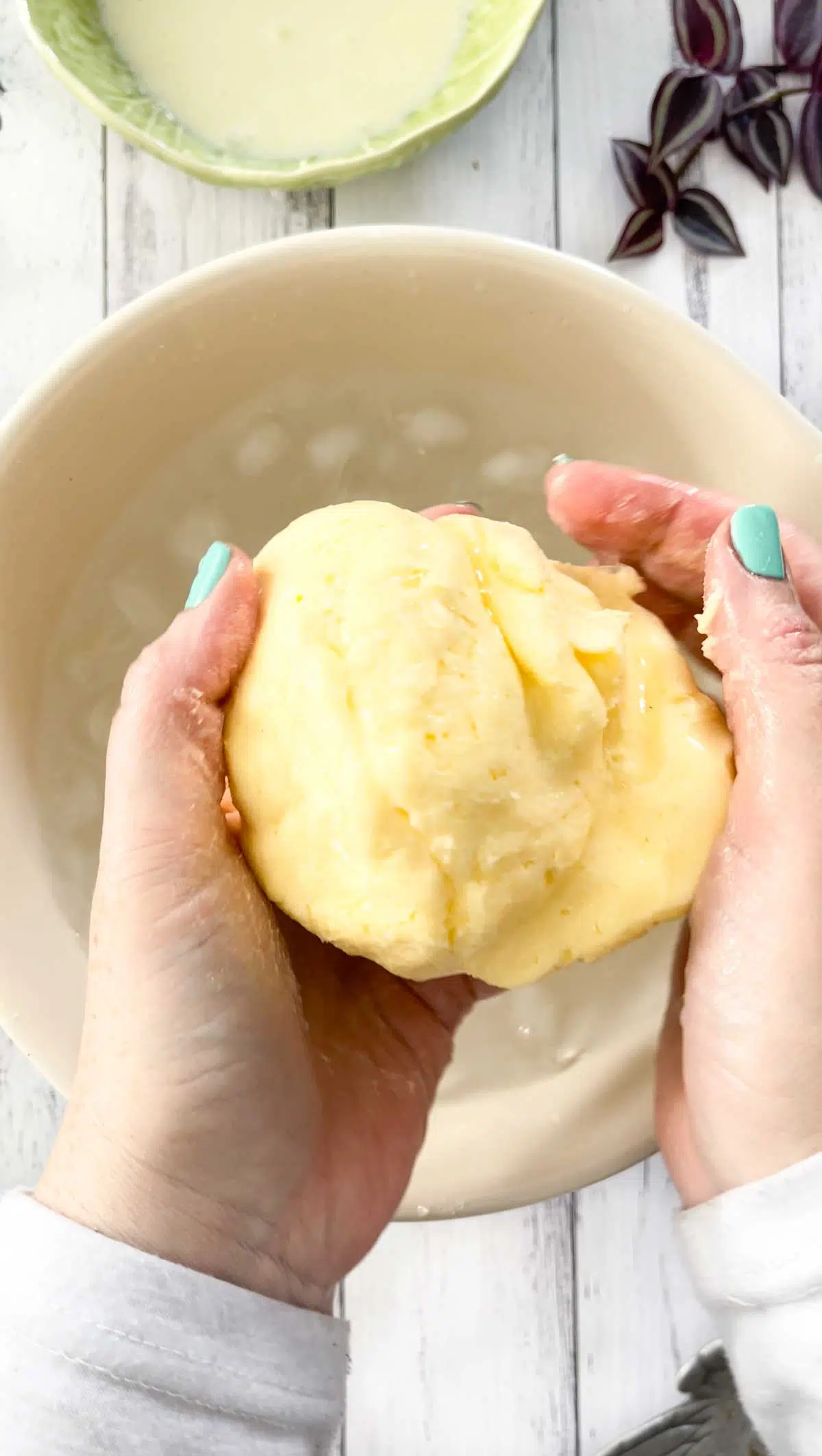
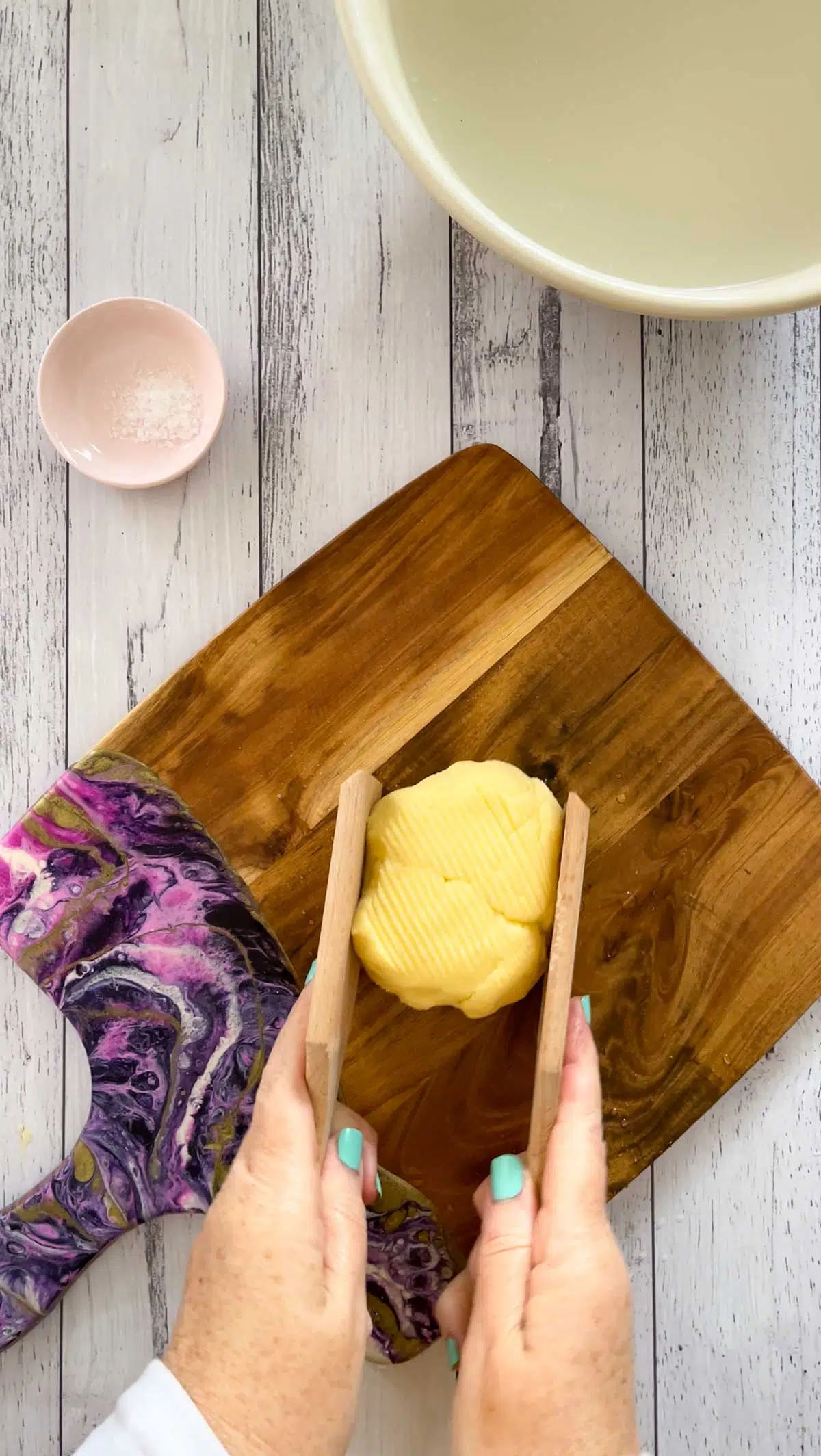
For best flavour I suggest using the butter within a month. Freezing it is also an option to ensure none of it goes to waste.
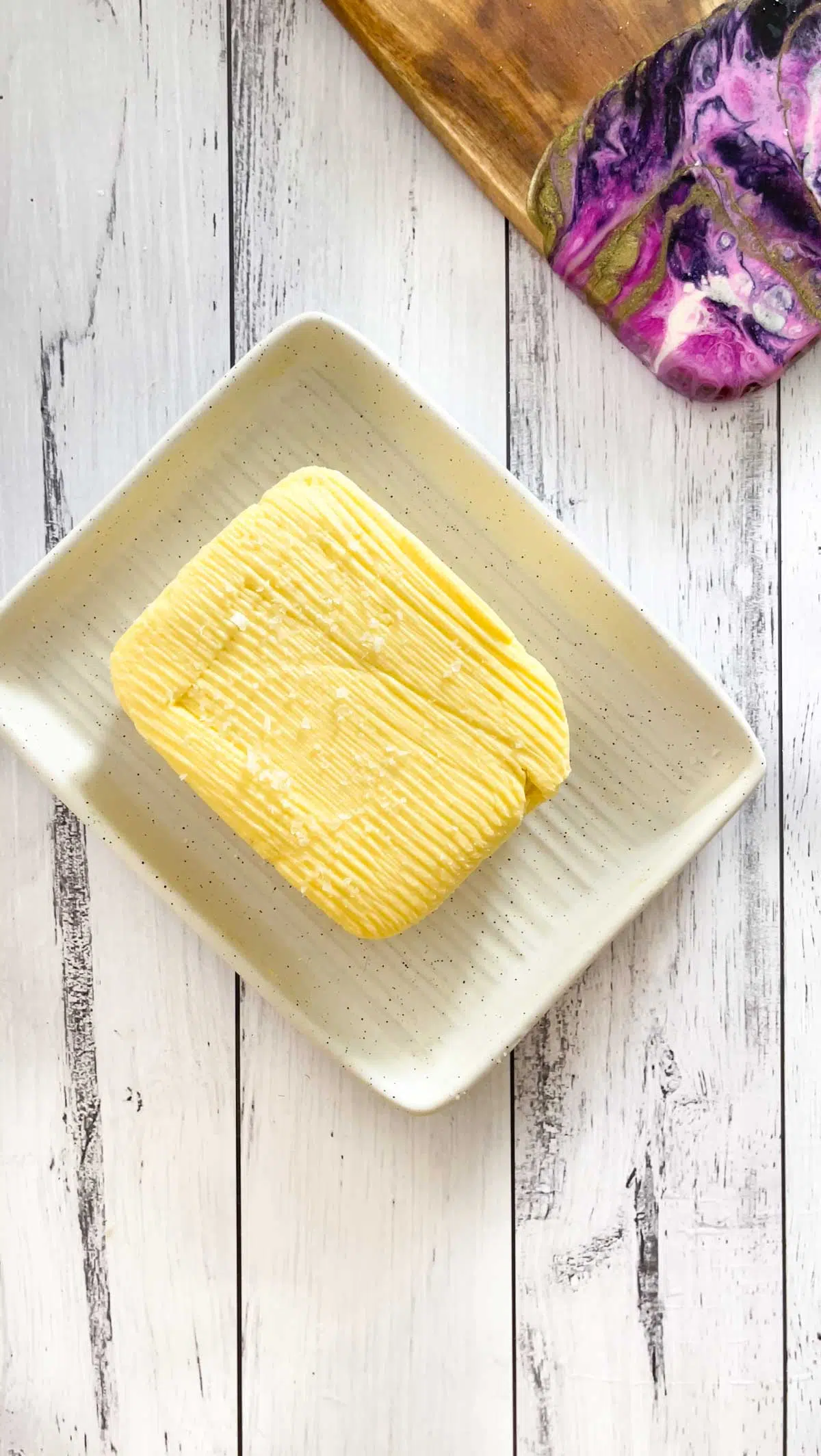
FAQ
The main difference is the fermentation of the cream to make cultured butter. There is also a slight tanginess to it, which isn’t present in uncultured butter.
The presence of probiotic bacteria that occurs during fermentation is definitely one advantage of cultured butter making it a great choice when available.
Yes it definitely can, and in the same volume that the recipe calls for.
Want More Condiment Ideas? Take A Look At These!
- Lacto-fermented Fig, Cinnamon and Honey Butter
- How To Make Sour Pickles
- Fermented Garlic Honey
- Miso Butter
If you try this recipe, I’d love to know. Leave a comment, rate it, and remember to tag @wholenaturalkitchen in your pics or reels on Instagram, Facebook or TikTok!
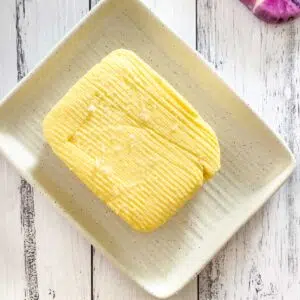
Cultured Butter
Equipment
- 1 Stand mixer or hand churner
- 1 Piece of muslin or a thin, clean tea towel
Ingredients
- 400 ml double cream (min. 35% fat)
- ¼ cup yoghurt
- Pinch sea salt (optional)
Instructions
- Pour the yoghurt into a large bowl, add the cream, and whisk together to combine.
- Cover the bowl with a clean cloth and set aside to ferment for 24 hours. The cream will have thickened slightly and smell a little sour when ready. If it's cold where you are, this may take up to 48 hours. If it's warmer, it will take less time.
- The next day, put some ice cold water in a large bowl and set it aside.
- Remove the cloth from the fermented cream and tip it all into the bowl of your mixer. Mix on high for a couple of minutes or until you see the cream split into a solid (butter) and liquid (buttermilk).
- Line another bowl with muslin or a thin, clean tea towel. Pour the butter and buttermilk into it then gather the sides, pick it up and squeeze well to drain all the buttermilk out.
- Pour the buttermilk into a jar and keep in the fridge until using.
- Next, take the butter and form it into a ball in your hands. Now dunk it into the iced water several times squeezing it as you do. You want to rinse it well and wash off any remaining buttermilk to ensure the butter doesn't spoil.
- If you have butter pats – Put the washed butter onto a chopping board and pat into a rectangle. Place in a butter dish, sprinkle with salt (optional) and store in the fridge.
- If you don't have butter pats – You can press the freshly made butter into a small dish and cover it before placing in the fridge. Or you can put the freshly made butter onto some baking paper, roll it into a log and store it that way.
Video
Notes
Nutrition
Pin This Recipe For Later
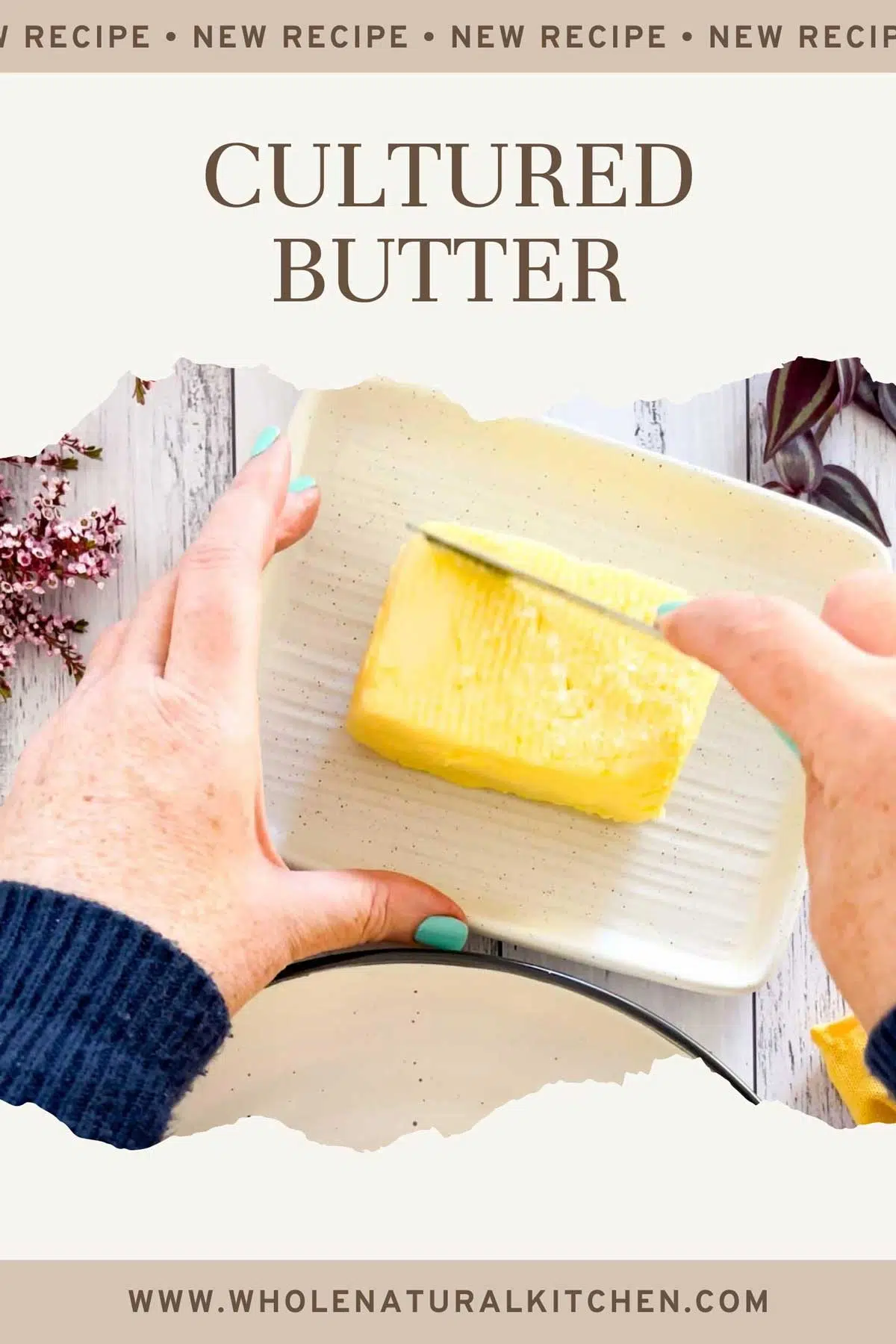

Gabby Campbell
Gabby is a degree qualified Naturopath/Nutritionist (BHSc Nat) with a love of all whole foods. She started her Naturopathic career in clinical practice before making the move to recipe development and online education – a result of wanting to combat the misinformation that abounds on the internet about food and health. Whole Natural Kitchen aims to transform the way you think about healthy eating by helping you embrace an abundance of nutritious foods while leaving the health fads behind. MORE ABOUT GABBY

Why have I never thought of making my own butter? I am so excited to make this ASAP this weekend, thank you so much for sharing 🙂
It’s such a great thing to do Cathleen! Once you have you’ll be making it all the time, it’s so simple.
I have always wanted to try making my own butter. This recipe came out perfect. Thank you for sharing.
Thanks MacKenzie, so great to hear!
Great post! I’ve never made this before but with these pictures and directions, it looks very easy to follow and delicious! Wonderful!
Thanks so much Beth! I hope you get to try it at some point. It’s truly delicious.
So cool to be able to make your own butter at home. And who knew it was so simple?!
It’s so very easy!
This was the first time I made cultured butter, and it really is a game changer! Thanks for the recipe!
That’s great to hear Tavo! Hope you’re enjoying it.